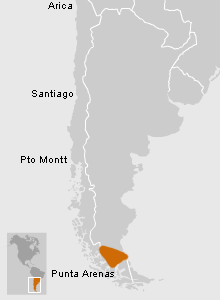These lithic groups were the first inhabitants of the Patagonia region of Chile and Argentina, at the southern extreme of South America, where they lived in the harsh conditions of the sub-Antarctic climate. The melting of the Pleistocene ice layers formed rivers and lakes and opened migration routes that were extended further by a sea level lower than that of the present day. The predominantly warm, dry climate led to the formation of steppe plant life and open woodland, creating a suitable habitat for a variety of herbivores, including both extinct and modern species.
How to Arrive
El Museo se encuentra ubicado en pleno centro de Santiago, en la esquina de las calles Bandera y Compañía, a una cuadra de la Plaza de Armas.
Tickets
Chileans and resident foreigners: $1,000 Foreigners: $8,000 Chilean students and resident foreigners: $500 Foreign students: $4,000
Guided Visit
El Museo cuenta con un servicio de guías, sin costo adicional, para los establecimientos educacionales.
Information for Teachers
Invitamos especialmente a coordinarse con alguno de nuestros guías para programar una visita o actividades de motivación y seguimiento que aprovechen de la mejor forma la experiencia de visitarnos.
Audioguides
Download recordings of the Permanent Exhibition display texts in English, French, Portuguese and Spanish here. These audioguides are in mp3 format and are arranged by cultural area, following the same order as our exhibit galleries. Descargue desde esta página audioguías en castellano, inglés, francés y portugués con los textos de las vitrinas de la […]






































